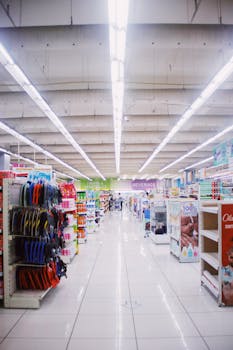
Retail Sales Slump in May: Department Stores Bear the Brunt of Consumer Spending Slowdown
The US retail sector experienced a significant downturn in May, with overall sales declining by a larger-than-expected 0.3%. This unexpected drop follows months of relatively stable growth, raising concerns about the overall health of the consumer economy and potential impacts on future economic projections. While various sectors felt the pinch, department stores were hit particularly hard, experiencing a dramatic decline in sales, signaling a potential shift in consumer spending habits. This unexpected dip provides a stark contrast to the robust growth seen in the early months of the year. Analysts point to several factors contributing to this unexpected slowdown, including persistent inflation, rising interest rates, and shifting consumer preferences.
Department Stores Face Steepest Decline
The most dramatic impact of the May retail sales decline was felt by department stores. These established retailers saw sales plunge by a significant margin, exceeding expectations. This sharp downturn highlights the growing challenges faced by traditional brick-and-mortar stores in an increasingly competitive retail landscape. The decline underscores the need for department stores to adapt to changing consumer behaviors and adopt innovative strategies to attract and retain customers.
Several factors contribute to the department store slump:
- E-commerce Competition: The rise of online retail giants continues to exert pressure on traditional department stores, with consumers increasingly turning to online platforms for convenience and competitive pricing.
- Shifting Consumer Preferences: Consumers are increasingly prioritizing experiences over material goods, and department stores haven't always successfully adapted to this shift.
- Inflationary Pressures: Persistent inflation has eroded consumer purchasing power, forcing many to cut back on discretionary spending, impacting high-priced items often found in department stores.
- Inventory Issues: Some analysts point to lingering inventory issues from previous quarters, potentially leading to overstocked shelves and reduced promotional activity in department stores.
Impact on Retail Jobs and the Economy
The decline in retail sales, particularly the significant drop in department store sales, raises concerns about potential job losses and broader economic implications. The retail sector is a significant employer, and a prolonged downturn could lead to reduced hiring, layoffs, and a dampening effect on overall economic growth. This situation underlines the intertwined nature of the retail industry and overall economic health.
Other Sectors Affected, but to a Lesser Extent
While department stores experienced the most dramatic drop, other retail sectors also saw declines in May, although less pronounced than the department store sector. This demonstrates that the overall consumer spending slowdown is impacting various aspects of the retail landscape, not just specific segments.
- Clothing Stores: Apparel sales saw a modest decline, reflecting consumers' cautious approach to discretionary spending.
- Furniture Stores: Sales of furniture and home furnishings also experienced a slight decrease, suggesting consumers are delaying major purchases due to economic uncertainty.
- Electronics and Appliances: This sector witnessed a relatively stable performance compared to others, potentially indicating that consumers still prioritize essential tech upgrades and appliance replacements.
The Role of Inflation and Interest Rates
The persistent high inflation and subsequent interest rate hikes by the Federal Reserve play a significant role in the May retail sales decline. Rising prices for everyday goods and services have reduced consumer disposable income, forcing many to curtail spending on non-essential items. Higher interest rates also impact borrowing costs, making it more expensive for consumers to finance purchases like furniture, appliances, and vehicles, further dampening retail sales. The struggle between inflation and consumer spending is a key factor in economic forecasting.
Consumer Sentiment and Future Outlook
Consumer sentiment remains subdued amidst persistent inflation and economic uncertainty. This cautious outlook translates directly into decreased consumer spending, impacting the performance of various retail sectors. The ongoing war in Ukraine, global supply chain disruptions, and geopolitical instability all contribute to the overall uncertainty, further impacting consumer confidence. Experts are closely monitoring these factors to assess the potential duration and depth of the retail sales slowdown.
Strategies for Retailers to Adapt
Retailers, particularly department stores, need to implement effective strategies to navigate the challenging retail landscape. This includes:
- Embracing Omnichannel Strategies: Integrating online and offline sales channels to provide a seamless customer experience.
- Personalization and Targeted Marketing: Utilizing data analytics to understand consumer preferences and deliver personalized marketing messages.
- Focusing on Value and Exclusivity: Offering compelling value propositions and exclusive products to attract and retain customers.
- Investing in Customer Service: Providing exceptional customer service to build loyalty and enhance the shopping experience.
The May retail sales decline serves as a clear warning sign for the retail sector and the broader economy. The downturn, particularly impacting department stores, underscores the need for retailers to adapt to changing consumer behavior, address economic headwinds, and implement innovative strategies to ensure their long-term sustainability. The coming months will be critical in determining whether this is a temporary blip or the start of a more significant downturn in consumer spending. Continued monitoring of consumer spending habits, inflation rates, and interest rates is crucial for understanding the future trajectory of the retail sector and its impact on the overall economy. The next few months will provide important insights into whether the retail landscape can recover from this recent dip or if further decline is imminent.




















